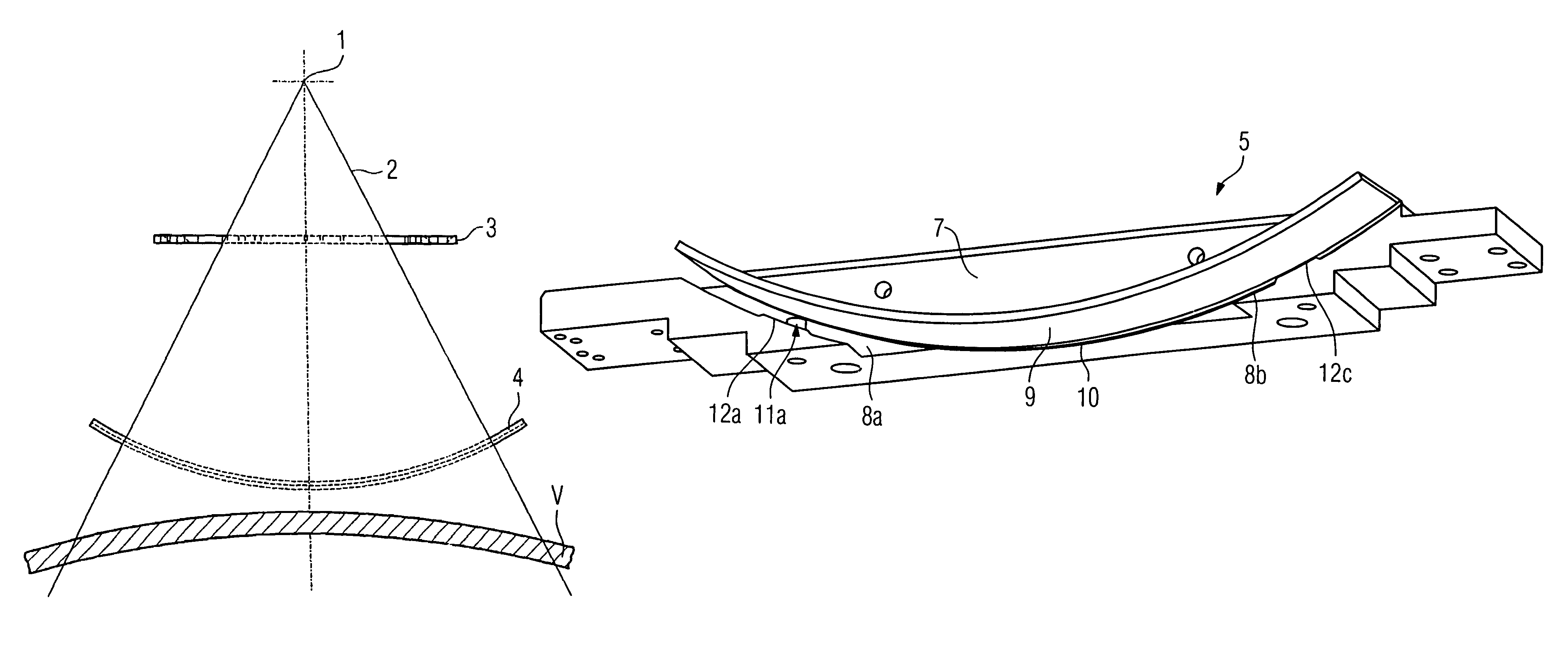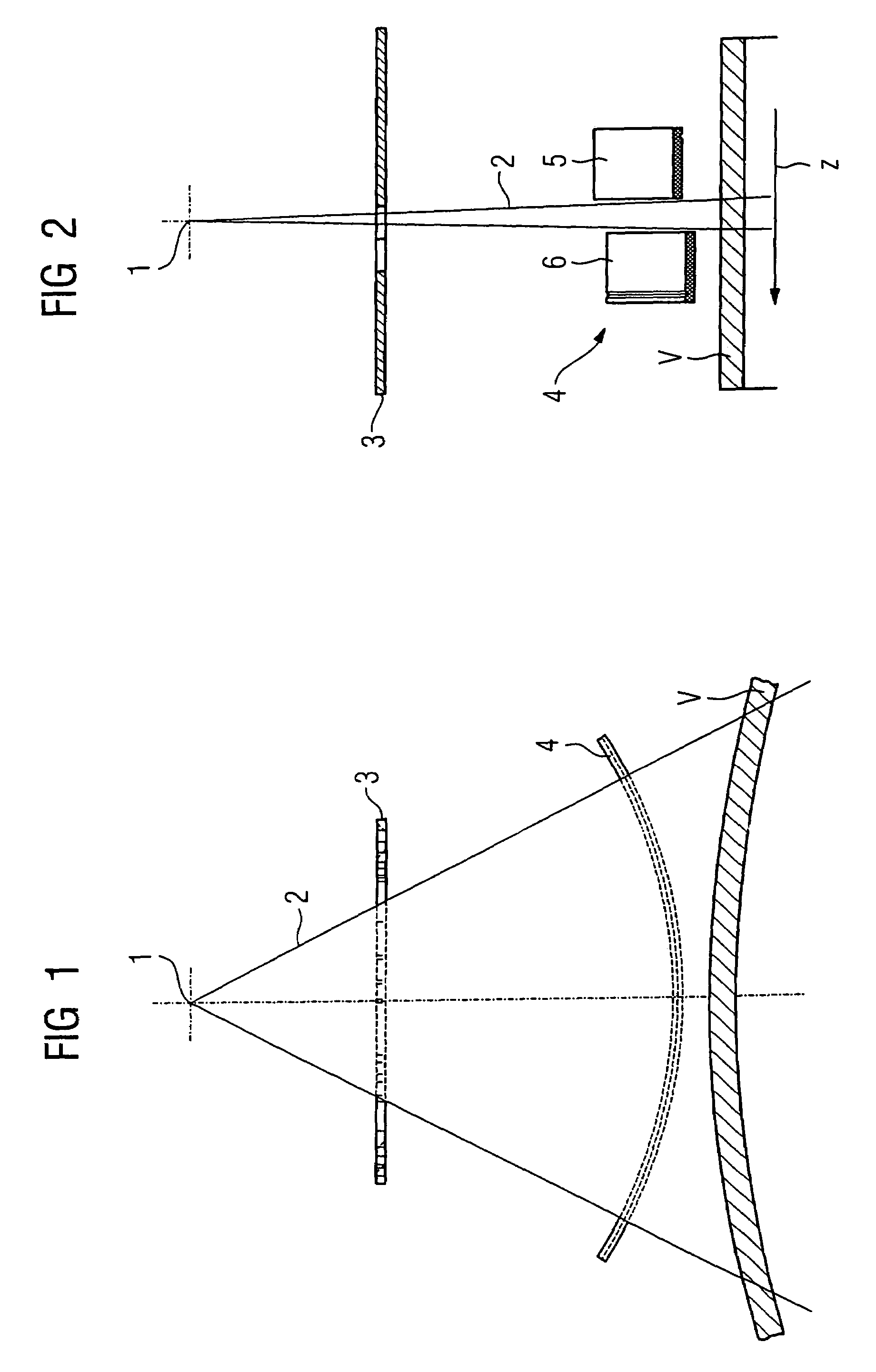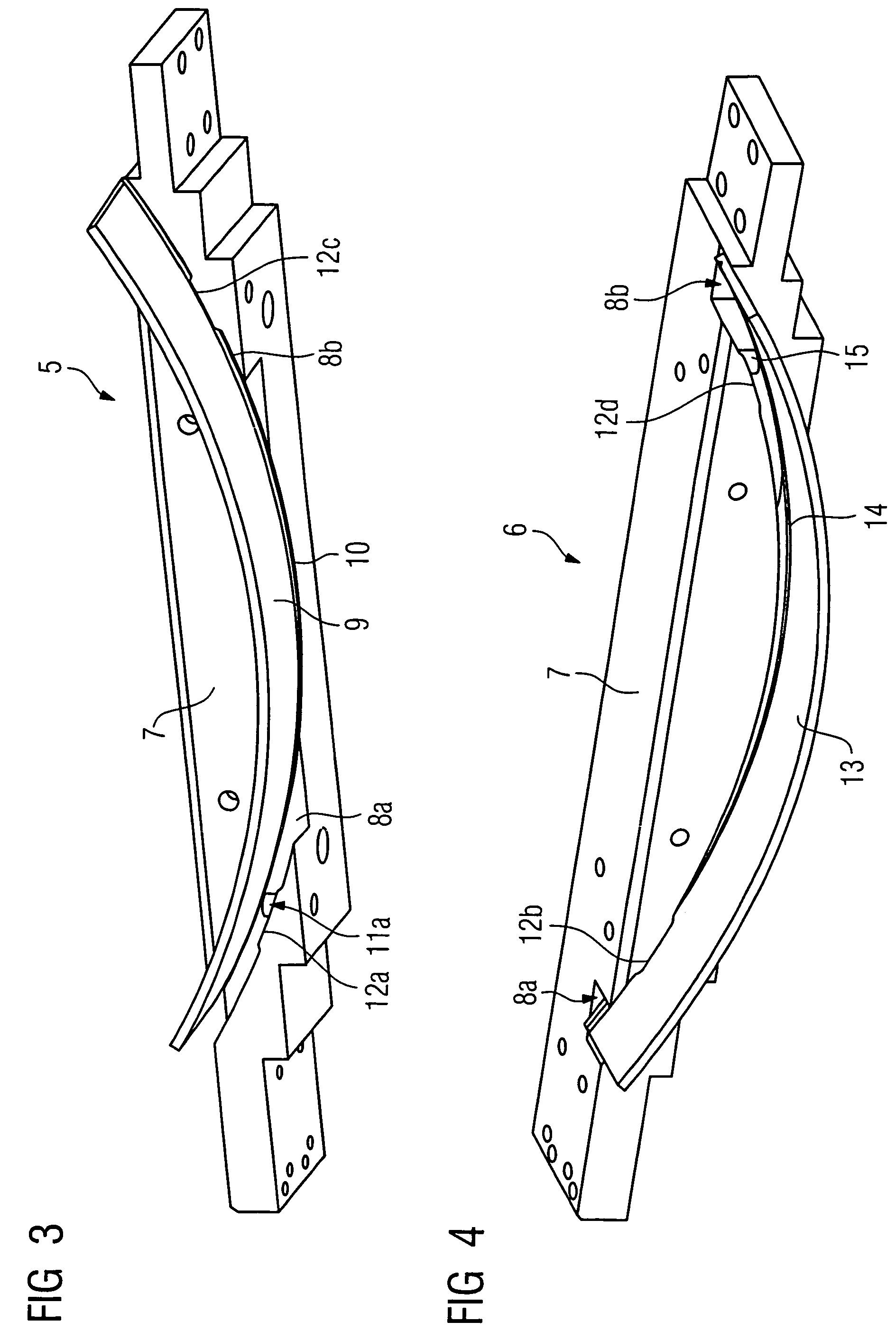X-ray computed tomography apparatus with beam-gating diaphragm
a computed tomography and beam-gating technology, which is applied in the direction of diaphragms/collimeters, instruments, and diaphragms for radiation diagnostics, etc., can solve the problems of carrier warpage in unexpected manner, inability to accurately position the absorber element, and inability to produce predetermined curvature radius with the necessary precision, etc., to achieve shorter structural height and reduce production expenditure. , the effect of reducing the heigh
- Summary
- Abstract
- Description
- Claims
- Application Information
AI Technical Summary
Benefits of technology
Problems solved by technology
Method used
Image
Examples
Embodiment Construction
[0025]The x-ray beam path of a computed tomography apparatus is schematically shown in FIGS. 1 and 2. The beam emanated from a focus 1 of an x-ray source (not shown). The fan-shaped x-ray beam 2 originating from the focus 1 is defined in terms of its geometry by a pre-diaphragm 3 and a diaphragm 4 arranged downstream in the beam propagation direction. The enclosure of a patient tunnel of the computed tomography apparatus is designated with the reference character V. The diaphragm 4 is formed of a first gating element 5 and a second gating element 6. The first gating element 5 and the second gating element 6 can be moved toward and away from one another parallel to a z-axis shown in FIG. 2.
[0026]In the first gating element 5 shown in perspective in FIG. 3, a carrier is provided with a first groove segment 8a and a second groove segment 8b. The opposite inner and outer walls of the groove segments 8a and 8b respectively lie on a common circular arc. A first absorber element 9 is accom...
PUM
| Property | Measurement | Unit |
|---|---|---|
| thickness | aaaaa | aaaaa |
| distances | aaaaa | aaaaa |
| length | aaaaa | aaaaa |
Abstract
Description
Claims
Application Information
 Login to View More
Login to View More - R&D
- Intellectual Property
- Life Sciences
- Materials
- Tech Scout
- Unparalleled Data Quality
- Higher Quality Content
- 60% Fewer Hallucinations
Browse by: Latest US Patents, China's latest patents, Technical Efficacy Thesaurus, Application Domain, Technology Topic, Popular Technical Reports.
© 2025 PatSnap. All rights reserved.Legal|Privacy policy|Modern Slavery Act Transparency Statement|Sitemap|About US| Contact US: help@patsnap.com



